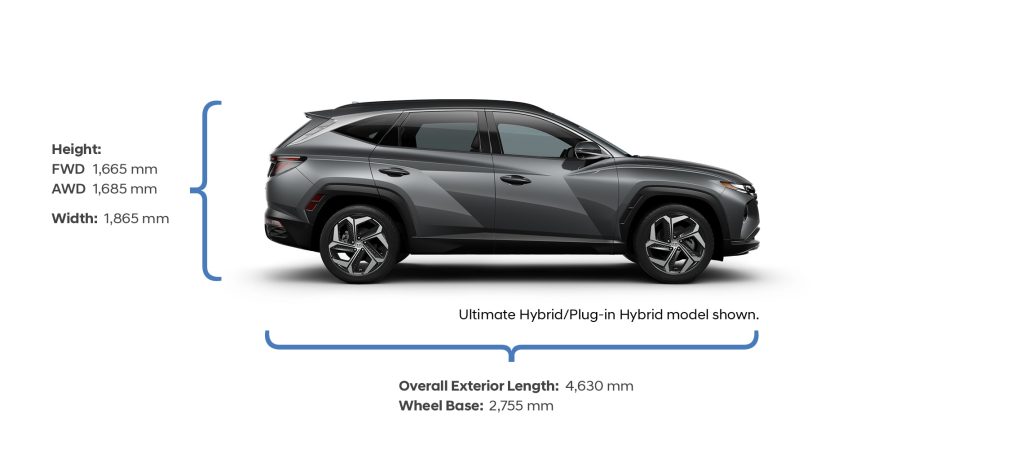

**Comparison of Hyundai Tucson Hybrid Models: Front-Wheel Drive (FWD) vs All-Wheel Drive (AWD)**
The Hyundai Tucson Hybrid has become a favored option in the compact SUV market, presenting a combination of fuel efficiency, contemporary styling, and cutting-edge technology. A crucial decision that potential buyers encounter when selecting a Tucson Hybrid is whether to choose the Front-Wheel Drive (FWD) or All-Wheel Drive (AWD) model. Each drivetrain provides unique benefits based on driving conditions, performance desires, and financial considerations. This article offers a detailed comparison of the FWD and AWD versions of the Hyundai Tucson Hybrid to assist buyers in making a well-informed choice.
—
### 1. **Drivetrain Overview**
– **Front-Wheel Drive (FWD)**: In FWD configurations, the power is delivered solely to the front wheels. Generally, this setup is lighter and more fuel-efficient, making it suitable for city and highway driving in temperate climates.
– **All-Wheel Drive (AWD)**: AWD systems channel power to all four wheels, either continuously or as needed. The Tucson Hybrid’s Hyundai HTRAC AWD system automatically modifies torque distribution based on road conditions, improving traction and stability.
—
### 2. **Performance and Handling**
– **FWD Variant**:
– Delivers a smooth and consistent driving experience on dry surfaces.
– Slightly lighter than AWD variants, which can lead to marginally improved acceleration and handling under optimal conditions.
– May encounter traction issues on slippery surfaces like snow, ice, or heavy rain.
– **AWD Variant**:
– Offers exceptional grip and stability across a variety of terrains, including snow, gravel, and wet surfaces.
– Improves cornering and handling during adverse weather.
– Marginally heavier, potentially resulting in a slight reduction in acceleration and nimbleness compared to FWD.
—
### 3. **Fuel Efficiency**
Fuel efficiency is a significant factor for buyers considering hybrid vehicles. The variance in fuel economy between the FWD and AWD versions of the Tucson Hybrid is modest yet important.
– **FWD Tucson Hybrid**:
– EPA-estimated fuel efficiency: Roughly 38 MPG combined (depends on trim and model year).
– More appropriate for drivers focused on maximizing fuel savings.
– **AWD Tucson Hybrid**:
– EPA-estimated fuel efficiency: Approximately 37 MPG combined.
– The minor decline in efficiency is attributed to the extra weight and complexity of the AWD technology.
—
### 4. **Price and Value**
– **Cost Difference**:
– AWD models generally have a price increase of about $1,500 to $2,000 compared to their FWD equivalents, depending on the trim.
– This price difference reflects not only the AWD system but often also added features and equipment associated with higher trims.
– **Resale Value**:
– AWD vehicles may command a higher resale price in areas with severe winters or challenging landscapes.
– FWD models might be more appealing in warmer climates where AWD is less critical.
—
### 5. **Use Case Scenarios**
– **Opt for FWD If**:
– You reside in a climate with moderate weather and well-kept roads.
– Your main driving occurs in urban or suburban settings.
– You aim to enhance fuel efficiency and reduce initial expenses.
– **Opt for AWD If**:
– You often drive in snowy, icy, or off-pavement conditions.
– You appreciate improved traction and stability for safety and performance.
– You intend to use the vehicle for recreational activities or live in a rural location.
—
### 6. **Technology and Features**
Regardless of the drivetrain choice, both FWD and AWD Tucson Hybrid models are outfitted with a comprehensive array of features, such as:
– Hyundai SmartSense safety systems (e.g., Forward Collision-Avoidance Assist, Lane Keeping Assist).
– An infotainment touchscreen featuring Apple CarPlay and Android Auto.
– Dual-zone climate control, heated seating, and an available panoramic sunroof.
However, AWD variants might only be available on higher trims, which incorporate additional luxury and technological elements like a larger touchscreen, superior audio systems, and leather seating.
—
### Conclusion
The decision between the Hyundai Tucson Hybrid FWD and AWD models ultimately hinges on your driving circumstances, performance requirements, and budget. The FWD option provides superior fuel economy and a lower buying price, making it well-suited for urban residents and those mindful of expenses. Conversely, the AWD variant grants improved traction and assurance in challenging driving conditions, making it an excellent pick for individuals in colder regions or those with an adventurous lifestyle.
By reflecting on your specific needs and priorities, you can select the Tucson Hybrid model that best fits your lifestyle and driving preferences.






